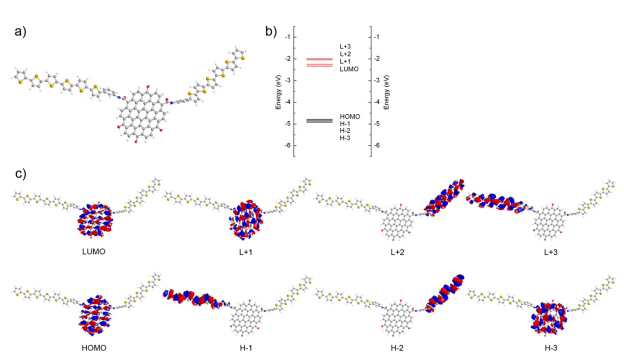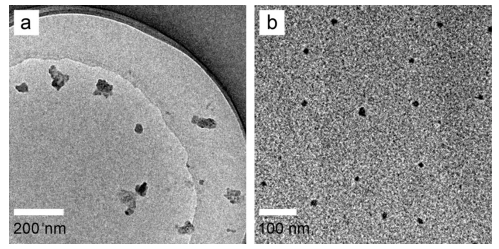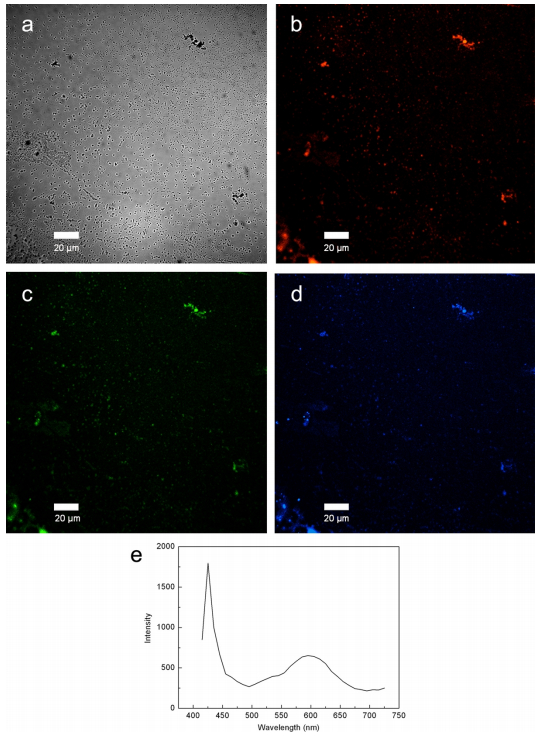Composites prepared by grafting a conjugated polymer, poly(3-hexylthiophene) (P3HT), to the surfaces of graphene oxide were shown to result in a dual fluorescent material with tunable photoluminescent properties. Capitalizing on these unique features, a new class of graphene-based sensors that offer the ratiometric fluorescent detection of amine-based pollutants was developed. Moreover, through a detailed spectroscopic study, the origin of the optical properties of the aforementioned composites was deconvoluted and found to be due to electronic decoupling of the conjugated polymer from the GO. The methodology described herein effectively overcomes a long-standing challenge that has prevented graphene based composites from finding utility in sensing and related applications. Chemical Science, 2014 
Calculated band structures of GO linked to a conjugated polymer: (a) ball-and-stick model of GO/sexithiophene, (b) molecular orbital energy levels of GO/sexithiophene, (c) molecular orbitals of GO/sexithiophene 
TEM images of the GO/HA composite: (a) large-sized sheets, and (b) small-sized particles 
Confocal fluorescence images of a GO/P3HT composite film (grafting density 13.9%), as detected with different band pass filters: (a) bright field, (b) 567.5-642.5 nm, (c) 500-530 nm, and (d) 432.5-467.5 nm. (e) The spectrum obtained from the GO/P3HT film, indicating that the GO/P3HT film shows the similiar PL properties as the suspension |

